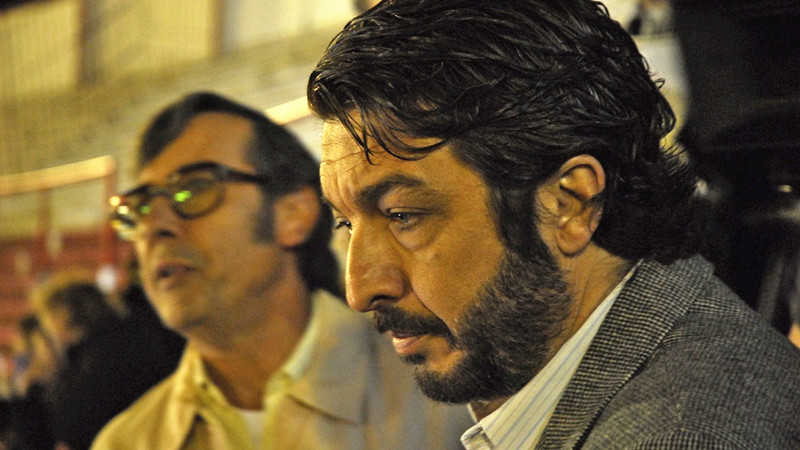
Crime films are not easily considered as a single genre, but on the contrary, they are characterized by being a collection of different genres. According to Thomas Leitch in his book “Crime Films Genres in American Cinema,” classifying a film as “one about crime” is correct and supports his theory through the appearance of three main figures in stories of this type that comply with the concepts of gender. These figures are: the victim, the criminal, and the avenger.
Leitch mentions, “It is the criminal and the kind of behavior he or she represents that are primary, and it is only to the extent that other characters are tempted by the criminal’s example that their films become crime films: films whose specific cultural task is to examine the price of social repression as imposed by the institutions of the justice system.” Based on Leitch’s concept, the films on this list were chosen. This theory can be clearly seen in Argentine films of the genre that were made from the year 2000 onwards. The reason for having chosen this decade was to demonstrate how the genre was transformed since the appearance of the new Argentine cinema in the ‘90s.
These selected films cover worlds in which criminal conduct seems to be something normal and not abnormal. The distinction between good and evil is not so clear and there are many characters that are submerged in gray zones between good and evil. It is important to consider that the movies on this list may be thrillers but fit better as crime films. This distinction is generated by the film historian Carlos Clarens, who distinguishes the criminal act that happens in thrillers and crime movies. In the first case, the criminal act is shown as an isolated fact while in crime movies, the criminal act is a metaphor for the uncertainty that society suffers from.
Throughout the analysis of each film, the most important component that Leitch mentions about the characters that fulfill the functions within the genre will be taken into account. The criminal who commits crime, the victim who suffers from crime, and the avenger who investigates with the hope of bringing the criminal to justice, to reestablish the social order that was altered by the crime that was committed.
It is very important to consider that the films in this list are a clear demonstration that these roles mix with each other, showing that the characters are complex and well constructed from the script. This analysis allows us to consider that good crime movies are those that deal with the collapse and continuous reestablishment of the boundaries between criminals, those characters who want to solve the crime committed, and the victims; this being the defining characteristic of the genre and also the characteristic that indicates the variety of sub-genres that emerge from this concept.
Taking into account the latter, we should consider Alfred Hitchcock’s shadow on the crime genre due to the suspense elements that take place in the staging of all the films on this list. Leitch mentions in his book that all Hitchcock films have victims as protagonists, ordinary people absorbed by committing or escaping crimes and also with the participation of heroic agents of the justice system, without making the criminal the hero of the movie. It is important to keep in mind Hitchcock’s filmography to analyze the evolution that the genre had over the decades, since his films clearly demonstrate the most important elements of the genre: the criminal, the victim and the avenger, putting the focus mainly on the character of the victim and the criminal.
1. Nine Queens (2000)
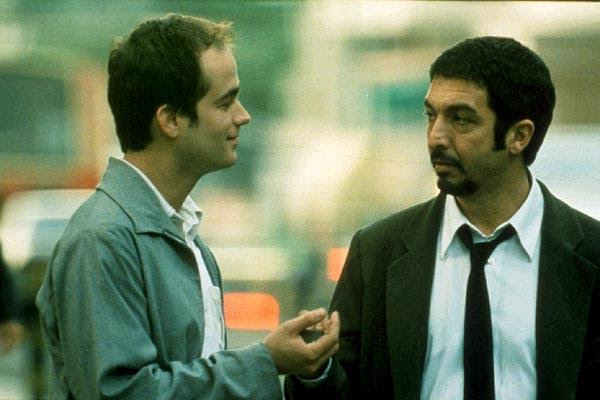
Marcos (Ricardo Darín) is a swindler of low ilk who, when observing Juan (Gastón Pauls) commit a scam by means of a trick to the tellers of a service station, invites him to be his partner in crime and Juan accepts. Both walk the streets of the city of Buenos Aires taking advantage of innocent people to get a few pesos from them through tricks and “stories.” Marcos is summoned by his sister to see his former partner and when he visits him, he convinces him to sell some counterfeit stamps that are extremely valuable: The Nine Queens. This will lead Marcos and Juan to immerse themselves in a network of thieves, swindlers, and liars, to the point that they will not know who to trust.
The film is directed and written by the then-debutant Fabián Bielinsky. It is considered an Argentine classic and captures through the characters the economic crisis that was going through Argentina at the time, which would take it a year later to the worst crisis in recent times in the country, where the restriction of the extraction of cash in banks was unleashed, severely impacting the lower and middle classes, generating general strikes, street protests, police repression and the resignation of the president on duty. After this enormous crisis, there was a before and after in the country and the same naturally happened with the stories that were told in the cinema.
In the case of “Nine Queens,” the scale of scammers is established that exists in all social strata within the city of Buenos Aires and it is shown how they cheat each other. If we analyze the film according to the theory of Thomas Leitch, it is established that all the characters that appear in the film are in constant transformation regarding their roles within the genre: they are all victims, criminals, and avengers. This makes the film attractive, because the viewer finds surprises throughout the film, without being able to predict who is the true criminal and who is the true victim.
From the filmmaking point of view, Bielinsky does a magnificent job through the spontaneity achieved in his scenes, through the dynamism generated between Ricardo Darín and Gastón Pauls, and also for having filmed scenes on the street, between real pedestrians, without scenography, carrying his own spirit of Italian neorealism. Thanks to this way of carrying out the staging, Bielinsky introduced his world through his own language of the “induced documentary” used by filmmakers such as William Friedkin, where it is possible to imitate the visual motives of the documentary style through abrupt camera movements, long shots, and the use of the handheld camera in real sets.
The film runs for a whole day and thanks to the aforementioned way of performing, Bielinsky managed to make the feeling of “real time” felt in all the scenes, achieved through photography and the shot sequences that always follow the two main characters who move mostly through the same set.
Thanks to the success of the film for its positive critical reception and for its box office success, the same script had its American version called “Criminal” directed by Gregory Jacobs, starring John C. Reilly and Diego Luna, released in 2004. Over the years, “Nine Queens” inspired more movies and TV series episodes like the British series “Hustle.”
2. The Aura (2005)

Esteban Espinosa (Ricardo Darín) is a very detailed taxidermist who, having a photographic memory, allows him to fantasize about a perfect robbery thinking of all the details. After being abandoned by his wife, he accepts the proposal of his friend Sontag (Alejandro Awada) to go hunting in a forest, but when they get there, Sontag does not find accommodation in the hotel he always rents and he is forced to rent from Diana Dietrich (Dolores Fonzi) a cabin in a remote area.
While Espinosa and Sontag are hunting a deer, both argue and Sontag decides to return to Buenos Aires. Espinosa is left alone in the forest and suffers from an episode of epilepsy. When he wakes up, he commits a crime by trying to hunt a deer and this unexpected event will lead him to discover the identity of the mysterious Dietrich, Diana’s husband and owner of the rented cabins. After discovering that Dietrich had a plan for a robbery, Espinosa runs into two criminals who were called by Dietrich to steal an armored truck, but when they did not find his acquaintance, Espinosa decided to organize the robbery personally.
It is the second film on the list that is directed by Fabián Bielinsky and it is also the second film starring Ricardo Darín, who does a great job transforming himself into someone as reserved as Espinosa, in addition to his masterful performance when the character suffers moments of epilepsy. Bielinsky returns to do an impeccable job when he is blocking the scenes. The filmmaking language he uses in this film is different from that of “Nine Queens,” since the camera tracks introspective the character of Espinosa, who is a reserved person, with few words and who suffers from epilepsy.
When Espinosa’s character ceases to be a passive one but an active one, Bielinsky highlights it through close-ups, being supported in one shot. Most of the time, when Espinosa talks about something personal, the medium shots come from the same shot in the foreground to highlight the special moments in which Espinosa opens up to the viewer and the rest of the characters. Bielinsky continues to maintain long shots with two characters (in most of the scenes) and also handles the suspense in the corresponding scenes very well, accompanying Espinosa at all times since the camera never takes off from his point of view.
Analyzing the protagonist from the theory of Thomas Leitch, Espinosa plays the role of being an innocent man who becomes a criminal, but his act also makes him an avenger, after discovering that he saved Diana from a dangerous criminal who was watching her and also practiced physical violence on her. Even so, this traumatic event that Espinosa commits makes him consciously want to steal the blurred truck, which ultimately makes him the criminal in the film. The characters are shaped in a very human way regarding the conception of good and evil; in the case of the protagonist, he is a person who is in a constant gray, since just as he commits criminal acts, he intentionally does not want to hurt anyone.
In conclusion, “The Aura” is a film that has the classic components of a thriller such as “Vertigo” (1958) or Alfred Hitchcock’s “Rear Window” (1954). They all feature a common character who suffers from some physical or mental problem (in this case unexpected epileptic episodes) and has a special feature: he has a very detailed memory, which allows him to transform as a character when he suffers an unexpected event when leaving his daily life (to go hunting in a forest), immersing himself in a completely new and unknown world. Beyond that, there are some scenes in the script that seem too convenient for the protagonist to end up carrying out the robbery with which he dreamed so much. The film is part of the latest masterpieces of Argentine cinema.
3. The Secret in Their Eyes (2009)
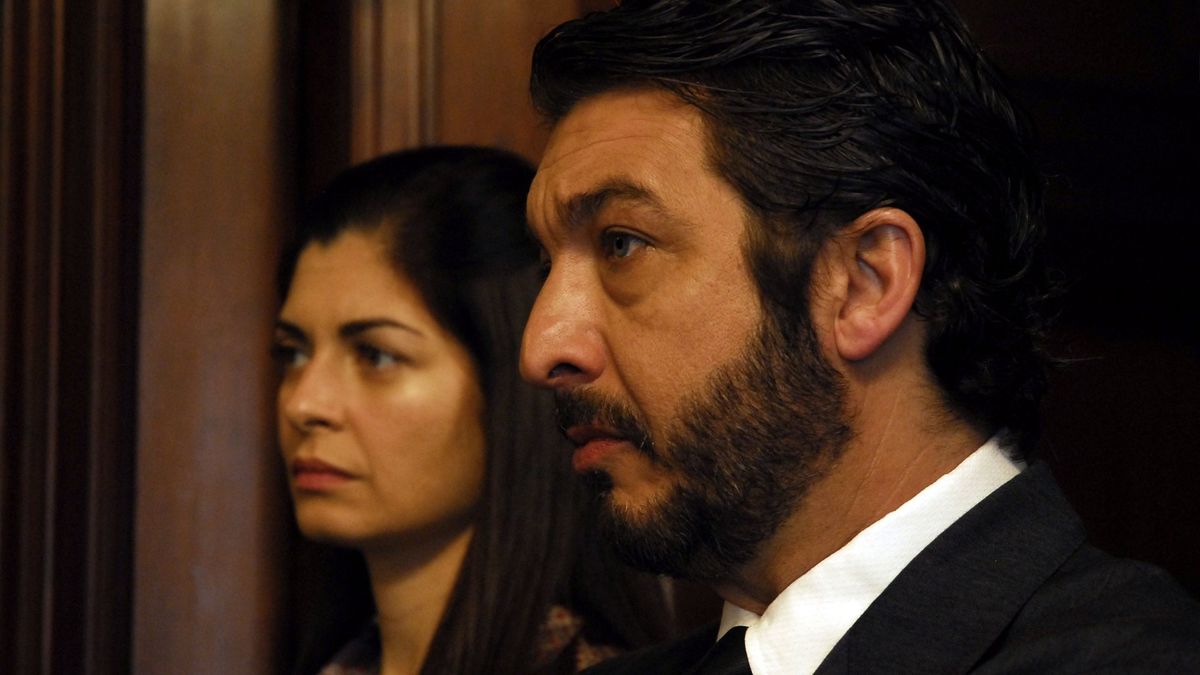
In 1999, Benjamín Espósito (Ricardo Darín), when retired from his role as federal justice agent, wrote a novel based on an old case closed as a source. The case was about the rape and murder of Liliana Coloto (Carla Quevedo), a case that included Espósito as well as his assistant Pablo Sandoval (Guillermo Francella) and also his department head Irene Menéndez Hastings (Soledad Villamil); when Espósito and Sandoval managed to find the murderer, the case could never be closed due to a political issue at the time. When writing the novel, Esposito wants to close the case at once and also have the excuse to see Irene again because of the hidden attraction he feels for her.
Much has already been said about this Argentine classic, but in this case we will take an approach to the elements of the crime genre that the film has (considering that it can be classified as a drama and also as a thriller). It is the only movie on the list that clearly shows the elements that make it up as a crime movie (based on the theory of Thomas Leitch): We have the victim-criminal-avenger and each is well defined in each of the characters. It is also contemplated that Coloto’s crime altered the social order of the protagonists.
It is a case that tormented Espósito throughout his life and that ended up transforming him into its victim since he found the murderer and never went to jail thanks to a corrupt political and judicial system, in addition to having lost the life of a friend. However, despite this, Esposito never becomes the avenger of the case. The film shows that the judicial system, in which Esposito and Irene works, is corrupt and given this, they can do nothing to ensure that the murderer complies with the sentence that corresponds to him for having raped and murdered Colato. In this sense, the two characters fail and fail to restore the order that was altered by the death of Colato. This incident leads the character of Esposito not to be part of such a marked line between good and evil, but he ends up leaving the Avenger of Colato to act when he discovers where the murderer is.
Juan José Campanella does a masterful job; each shot follows Espósito’s gaze and masterfully establishes his point of view throughout the entire film. In most scenes where there are two or more characters indoors, the camera is positioned in front of an object that turns out to be the foreshortening of a specific character (a chair or wall is also used), covering a portion of the frame and generating several levels of depth in which the characters are (in depth of field there is a medium shot in which the main character of the scene is). This decision not only generates dynamism in the scene (since most of the time there is an internal rhythm naturally generated by the characters) but it also works as someone who is spying and witnesses all the memories of Espósito.
Ricardo Darín, Soledad Villamil and Guillermo Francella do an impeccable job throughout the film, just like the rest of the cast. Between Darín, Villamil and Francella, there is a unique dynamism that arises and Francella could be considered in one of the best roles of his career.
It should not be overlooked that the film has an important Argentine identity to understand the political context that Argentina was undergoing in 1975 (a year before the worst coup in the history of this country), and it should be highlighted to understand why the case of Irene and Esposito fails to imprison Colato’s murderer.
4. Carancho (2010)
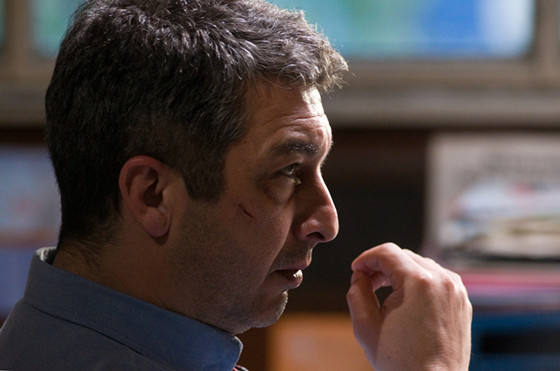
Sosa (Ricardo Darín) is a lawyer who, when he loses his license, immerses himself in the world of corruption, forming part of a criminal society that allows him to reach traffic accident sites before anyone else to offer his legal services to victims living on them. In one of the accidents, he meets Luján (Martina Gusmán), a young addicted doctor who works as a night watch in a hospital in San Justo, in the province of Buenos Aires, and lives in anguish over her work. After meeting, both have a relationship that will evolve to the point that Luján will help Sosa to try to escape from the criminal world in which he lives.
Bold, raw and with just the right dose of violent scenes, “Carancho” shows a world submerged in the dark streets of the suburbs of Buenos Aires, which are covered in accidents, crimes, and corruption that are linked to the world of medical emergencies, showing the hospital as the institution that is in charge of facing, containing, and saving both the victims and the criminals of the city. This great film shows through the character of Sosa a constant transformation between victim-criminal-avenger and the consequence of this transformation falls on the character of Luján, who ends up being a victim of the corrupt world that Sosa brings to his life.
5. Burnt Money (2000)
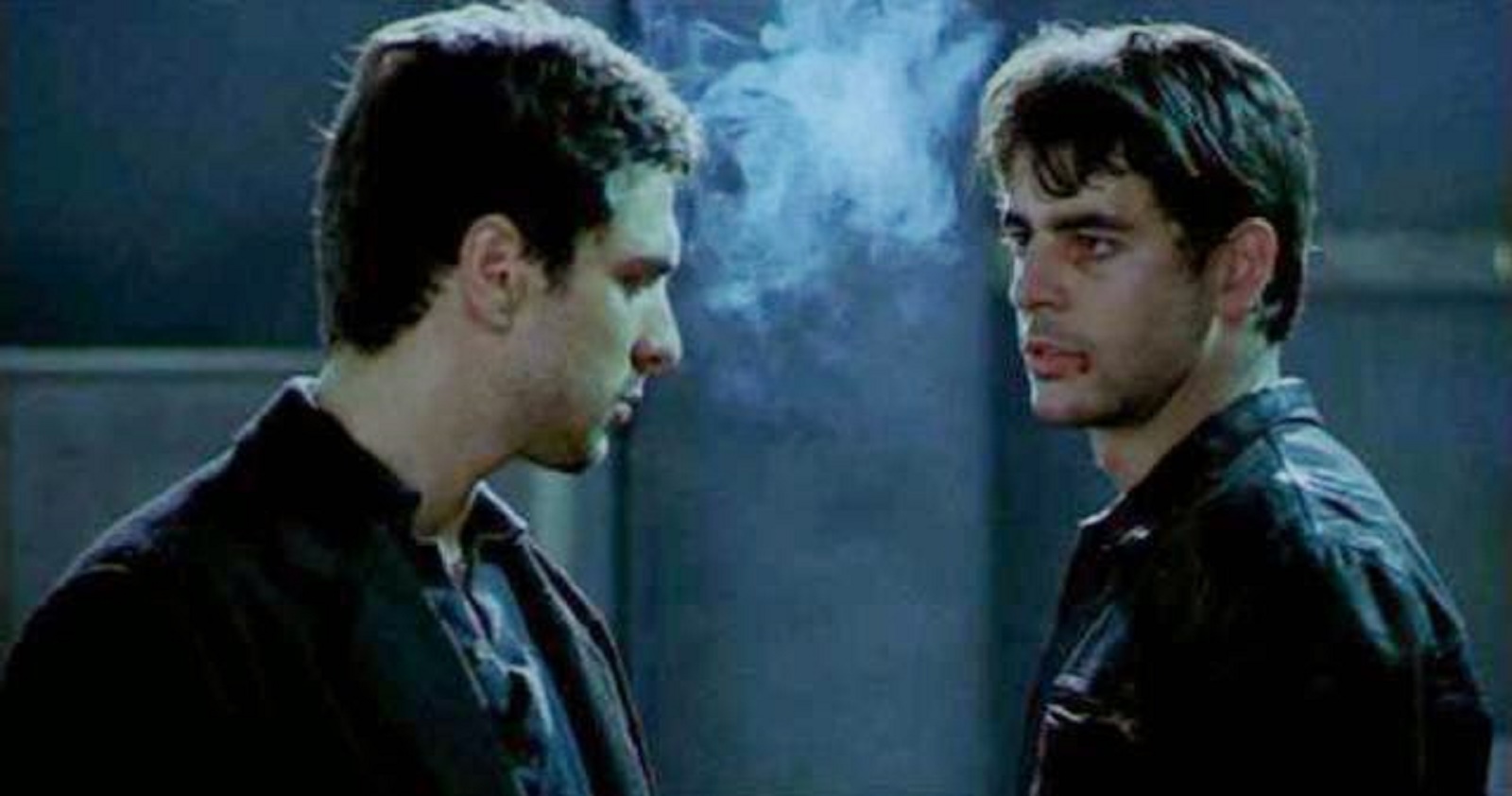
Two criminals, El Nene (Leonardo Sbaraglia) and Angel (Eduardo Noriega) who call themselves Los Mellizos, accept the call of a criminal boss named Fontana (Ricardo Bartis) to be part of a criminal trio made up of them and Cuervo (Pablo Echarri), another criminal who is addicted to drugs. Fontana sends them to commit a robbery of a highway of flows, but when the robbery is carried out, Angel is wounded by a policeman, causing Nene to murder all the guards of the truck in an attack of anger. This makes the Buenos Aires police do an intense search to find the culprits.
This film is a classic of the crime genre of Argentine cinema, based on a real case and directed by Marcelo Piñeyro, the Argentine director who also directed other classics such as “Cenizas del Paraíso” (1997) and “Kamchatka” (2002). The special thing about “Burnt Money,” regarding the crime genre, is that the love relationship between Nene and Angel makes them go from becoming criminals to victims of themselves, which will take them on a path of tragedy throughout the entire film. Piñeyro tells the story in a classic and imposing format; the intensity that the protagonists experience is reflected in a unique way in each of the scenes, having a kind of Martin Scorsese-esque influence.